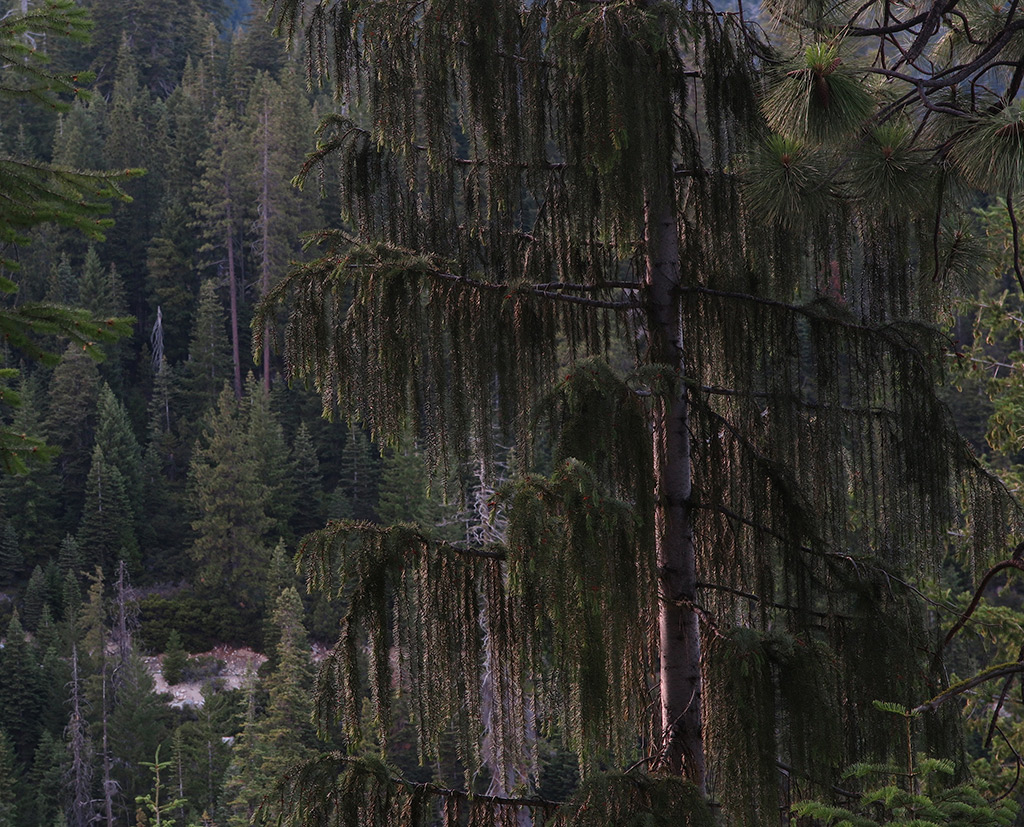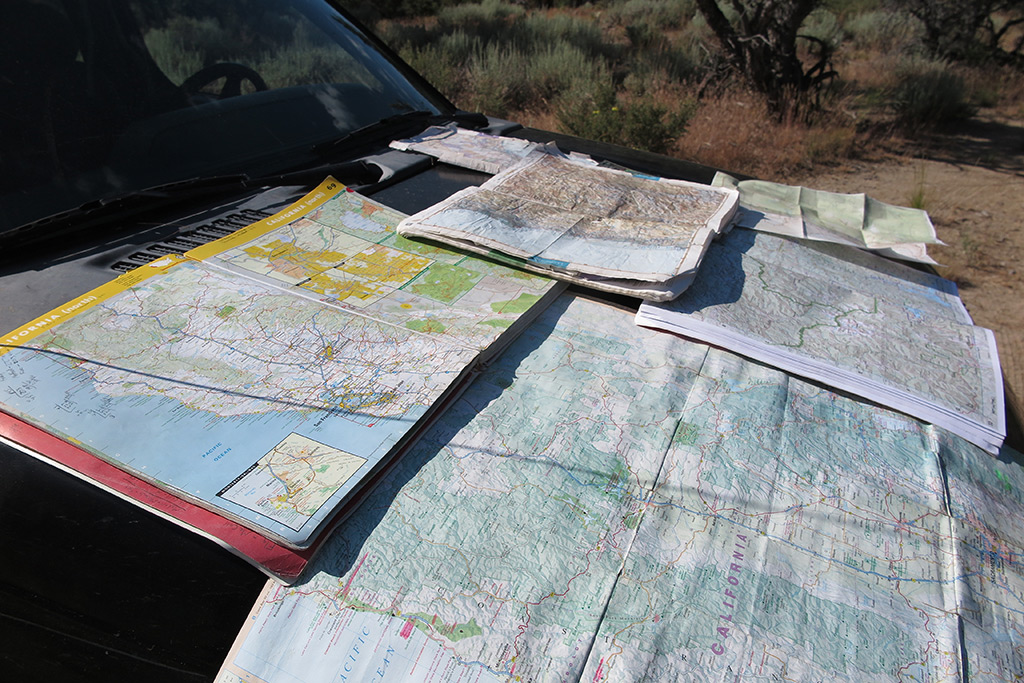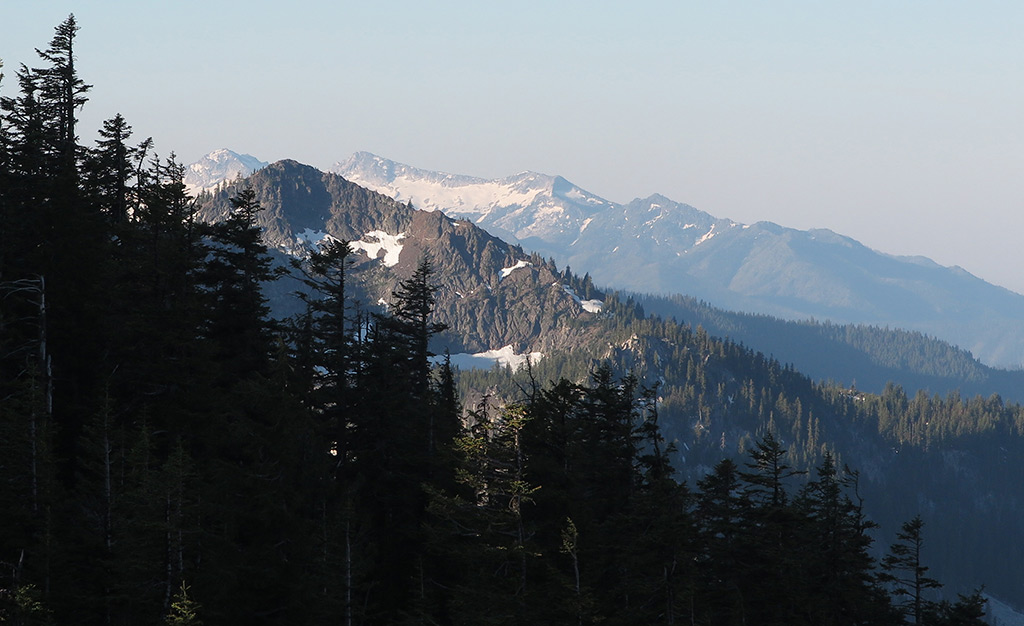Exploring North America’s conifer cradle in California
By Tyler Williams; Photography by Tyler Williams
The drive toward Duck Lakes Basin is nothing spectacular. Dry open slopes border the road, with occasional glimpses of snow-covered Mt. Shasta offering distant, untouchable scenery. Within a mile of the trailhead, however, a forest begins to close overhead, maples and cedars shroud clear little creeks and the place feels like maybe, in a foggy dusk, it just might hold a Sasquatch.
Still, even after setting out on foot, up old logging roads, it does not feel terribly exotic. There are the six standard conifers of the region — one cedar, two firs and three pines — but two of those, Jeffrey and ponderosa pine, are almost indistinguishable. It hardly feels like a conifer Mecca.
That all changes with the bizarre dangling fronds of a Brewer spruce.
This is a tree straight out of a children’s fantasy novel: hauntingly droopy, brooding, dark, other worldly. It contrasts sharply with the tight organized needles of a nearby Shasta fir and seems to fit in better with the soft boughs of a mountain hemlock, which unexpectedly leans out over the closed road. Suddenly all the trees are bigger, and a long corridor leads into the kingdom, as if some great mystery were about to be revealed.
New species come at every turn; Pacific yew, western white pine, Englemann spruce and the common, but out of place, tree that first gave this basin botanical significance 40 years ago when it was discovered here — subalpine fir (Abies lasiocarpa). Subalpine fir grows from Arizona’s sky islands to arctic Alaska, but it is noticeably absent in much of California. So, when botanists John Sawyer and Dale Thornburg came across a subalpine fir here in 1969, it was a Holy Grail moment. Their revelations led them to coin the Duck Lakes Basin “The Miracle Mile,” because within that mile one could find 18 different species of conifer, a higher concentration than anywhere in North America.
This basin is but one jewel within a region boasting 38 types of conifer, the second-most diverse assemblage in the world. Only the tropical isle of New Caledonia claims more, with 44 different trees. And, while the boundaries of an island like New Caledonia are clear, the parameters of North America’s conifer cradle are not as easily drawn. The generally accepted borders extend from California’s Yolla Bolly Mountains in the south to Oregon’s Siskiyou Range in the north, the Pacific Ocean in the west to Mt. Shasta in the east. The district is separate from the sodden Cascade Range, sequestered from the snowy Sierra Nevada, and squeezed between the Great Basin Desert and the moist Pacific. It is a crumpled conglomeration of geography sharing elements with all these eco-regions, a botanical melting pot on the fringe of the continent. Titles for the area reflect the nebulous boundaries: far northwestern California, the Redwood Coast, the Klamath River Ranges or simply Klamath Country. The most descriptively poignant term ever coined came from author David Rains Wallace, whose title for his 1983 naturalist’s classic created an enduring label — The Klamath Knot.
Spawned partially from Wallace’s seminal tome, Conifer Country is the latest in Knot literature. Part field guide and part hiking guide, it is the product of scientist, explorer, conifer-crazy author Michael Edward Kauffmann, who shares a detectable passion for his subject. The last hike listed in the book is a 400-mile-long route that passes 32 conifer species on a winding course from mountaintop to sea. It’s doubtful that anyone has completed the traverse,
except, of course, Kauffmann himself. He did it in 2009, and he called it “The Bigfoot Trail.”
The legendary forest beast became inextricably linked with the region in 1955, when size 30 plaster cast footprints were produced from the dirt near logging machinery. Even today, a fascination for the forest beast persists. As I wheeled into the backcountry resupply town of Happy Camp, three statues of the secretive ape leered at me before I passed a Bigfoot deli, Bigfoot RV park and Bigfoot towing service. It’s no stretch to see how Klamath Country has remained ground zero for Sasquatch lore. Scattered communities like this are reached only after driving a web of curvy mountain roads that climb over ridges and trace narrow cuts above steep river canyons, all of it cloaked in forest. My route turned so often through the mountain maze that I was forced to stop regularly and check my map, sorting through a disorganized matrix of river drainages that seem to be tossed randomly across the landscape.
I wasn’t tracing Kauffmann’s epic route, but I still hoped to find the biggest, strangest and most diverse collections of trees during my conifer cruise, which meant visiting the nine separate ranges of the Klamath Mountain complex. Geologists will tell us that the area is a scramble of continental accretions, which is sort of like a messy pile of table scraps leftover from the Pacific Plate’s crash into North America.
Duck Lakes Basin, my first stop, was near the eastern margin of that mountainous heap, four ranges removed from the damp ocean airmass, but also perched at the apex of a topographic “V” that funnels northerly weather straight in to nurture those sneaky subalpine firs.
After botanists Sawyer and Thornburg found the trees, they conducted chemical analysis of the needles to see if there was correlation with Cascadian firs, or the slightly different Rocky Mountain variety. The two have different evolutionary backgrounds, and the interior firs might have migrated west, it was thought, across arid eastern Oregon during the Pleistocene ice ages. It turned out that the Duck Lake firs were actually borne of the nearer Cascades, having drifted south to find final refuge here in the Knot. There are others with a similar story. Alaska cedar, western redcedar, Pacific silver fir, grand fir, Sitka spruce and Western hemlock all find their southern limits in Klamath Country.
These trees can grow here because this is the southern edge of the Pacific Northwest, where storms sweep down from the Gulf of Alaska in relentless waves, their trailing bands of moisture steering inland with the help of Cape Mendocino — that bulge of land nudging outward along California’s northern coast. Yet, sometimes those storms slip past to the north, as if reacting to the political boundary of the Oregon state line. So, Klamath Mediterranean-type climate, bringing reliably dry summers that suit species from the south. Country is often defined by California’s trademark Mediterranean-type climate, bringing reliably dry summers that suit species from the south.
Approaching a trailhead in the Trinity Mountains, I passed some of the northernmost gray pines, those small charismatic beacons of Sierra Nevada foothills. Minutes later, I was marching up a granite valley reminiscent of the Sierra, echoing with waterfalls and sprinkled in white fir, another species that grows here, but no farther north. Jeffrey pine, too, reaches its northern range limit in the Klamath. One of them stopped me cold, as all great trees do, with pure breathtaking eminence as I attempted to walk past. The tree was more than 200 feet tall, reigning over an otherwise impressive grove of cedar and fir. After a half-hour of oogling and photographing, I picked up a cone. Prickly, small, not Jeffrey-like — this tree was actually a ponderosa pine, and it was one of the five biggest in the world, I’d later learn. In the Klamath, you never know what you might find.
Climate and topography are principal elements of Klamath overlap, but the strangest botanical settings of all in these mountains come from an unusual geologic circumstance — serpentine. The oldest rock layers here contain a high concentration of minerals, mostly iron and magnesium, which have seeped down over millennia from overlying layers to collect at the bottom. There they might have remained far from the light of day, but in the folded and eroded Klamaths, these ultramafic rocks are sometimes exposed. Where this happens, few trees grow despite excellent climatic conditions, because they cannot deal with the highly mineralized soil. The result is a botanical collection of tolerant endemic plants and a sparse landscape of stunted, slow growing trees, mostly cypresses and pines, often existing in close proximity to a rich mixed conifer forest.
Even beyond the serpentine barrens, the area is not complete rainforest like similar near-ocean mountains are farther north. One minute you are in a lush grotto that feels like the trees might go on forever, the next you might be cowering from a hot sun in shadeless chaparral. As I approached the South Fork of the Trinity River at a place called Hellgate, where Kauffmann teases “some of the largest specimens of Pacific yew” live, hillsides of scattered live oak wrinkled in summer heat, and I couldn’t think of anything but reaching the cool green water. Shade-loving yews seemed a long ways off. But, the slopes of the river canyon did hold surprisingly large Douglas-firs, trees that were probably 500 years old or more, having survived dozens of forest fires to reach that stature. The hot hillsides above were easily forgotten amid the distracting giants, and just as I remembered my reason for being there, Kauffmann’s yew trees, there they were.
Yew trees are not a jaw-droppingly large or picturesque species. Twisted and often half dead, their mosaic red bark is their most visually striking feature, and only someone who is familiar with the tree will appreciate a big, old yew, which is not much bigger than a teenage Douglas-fir. But, what they lack in grandeur they redeem in character, with branches that spread and twist like arthritic fingers. Instead of cones, unusual berry-like red balls called arils hang from their boughs. They congregated along the edge of the river like wise old men, enjoying the shade of the tall firs and the cool breeze over the water to make a long life, all just below mountainsides that burst into flame twice a decade.
Three thousand feet above the South Fork yews, the longest continuous ridge in the United States forms a neat border between mountains and coast. I stood on its crest in an aromatic ocean breeze, then turned to gaze through hot hazy layers of topography to the snow cone of Mt. Shasta, one hundred miles inland. The ridge is called South Fork Mountain, but if a forester had named it they’d have called it mountain of the firs, because covering the escarpment were white firs, grand firs, Shasta firs and the non-fir, (technically a Pseudotsuga, not an Abies) Douglas-fir. Each species had a distinctive look and presence, yet all co-mingled in a luxuriant carpet of soft green.

Near the high point of South Fork Mountain, I scouted for Shasta firs that displayed characteristics of their northern relative, the noble fir, but a forest fire had recently raged across the ridgeline, leaving a blackened landscape right to the top of mature 150-foot-tall trees. The view is open now, but the unique transition zone, one of the fundamental pieces of Klamath overlap, is gone for our lifetimes.
If there is any solace in this loss, it can be found in the very nature of the Knot itself, because the forests of the Klamath are a window to epochs past. The greatest forest the earth has ever known occurred 65 million years ago, when today’s American West was a relatively narrow peninsula between great seas which transported warm moist air all the way to northern latitudes. This Arcto-Tertiary forest was a menagerie of wildly different species; magnolia, fig, redwood, cypress. As the continents shifted and the oceans retracted and mountains grew, the Arcto-Tertiary forest withdrew. Fragments of the great woods found refuge in mountainous redoubts where the climate was similar enough to old times that some species could hang on.
The Brewer spruce is one of those relicts, existing now along with numerous new faces in the forest. The fact that so many species live in one particular region is really just a quirk of time, a perfect combination of geology, topography and climate. No human ever had the opportunity to witness the Arcto-Tertiary forest, and it’s likely that no human will ever again get to see the Shasta/noble fir hybrids of South Fork Mountain. We do, however, happen to be here when hemlocks, cedars, firs and pines all share a single grove, when relicts of the past meet conditions of the future, when south and north and east and west all meet to produce a place with more than 30 conifers, all at once.
Now is the time, and the place is the Klamath.
Tyler Williams is a big-tree hunter, adventure seeker and author of Big Tree Hikes of the Coast: A Guide to the Giants. To learn more, visit his website www.funhogpress.com.




